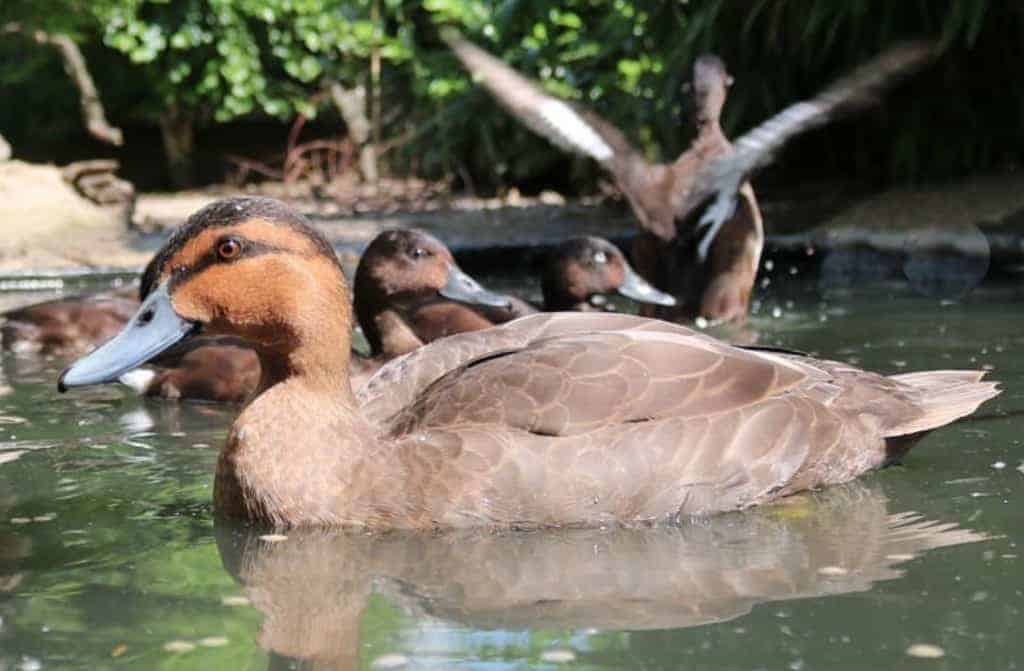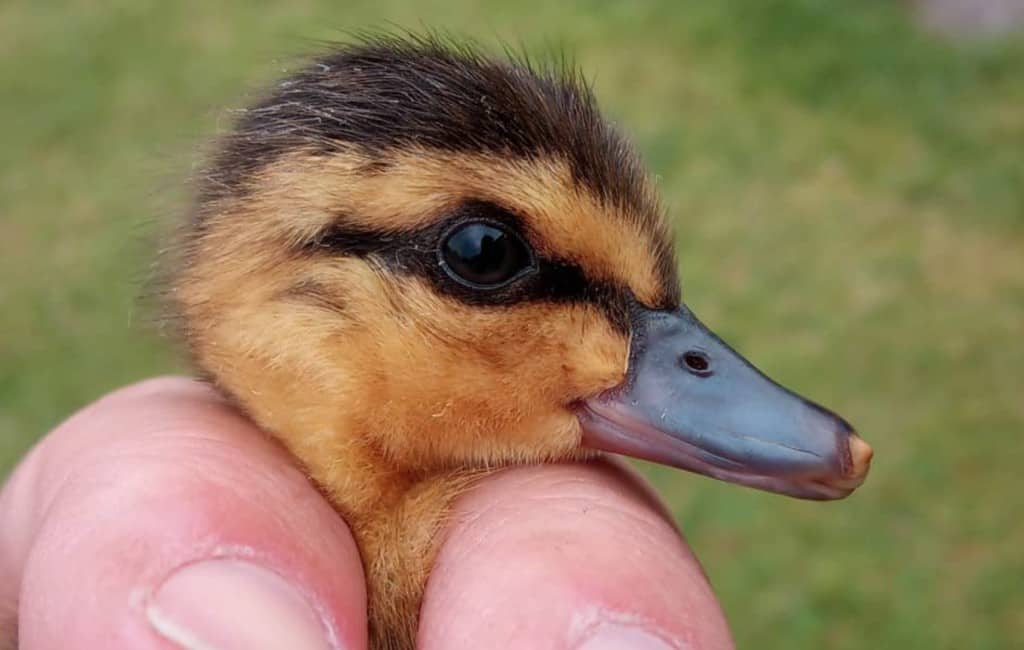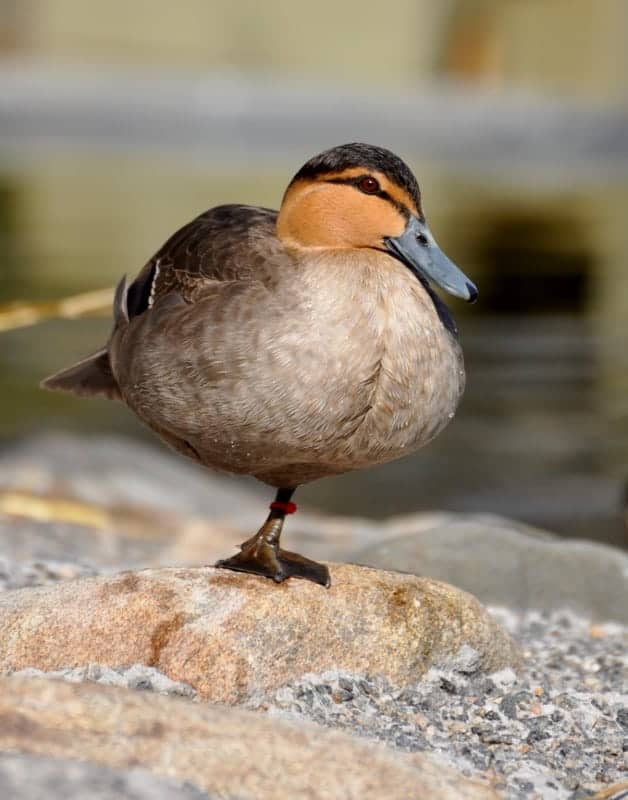Philippine Duck

The Philippine Duck frequents most freshwater and saltwater habitats, including mangroves, open sea and forest watercourses. The diet is fish, shrimps, insects, rice and young vegetation.

Anas luzonica
One of the most beautiful species of its genus, the Philippine Duck is easily recognised by its cinnamon-orange head, contrasting with black crown and eye-stripe. The body is grey; the sexes are identical, and there is no eclipse plumage.
An endemic to the Philippines, it has been little studied in the wild but it is undergoing a rapid and continuing decline owing to extensive over-hunting and the widespread conversion of its wetland habitats: thus it is currently listed as Vulnerable.

Long popular in captivity, Philippine Ducks are unobtrusive birds that are easy to keep, and breed readily. However, they will hybridise with their congeners: many captive birds show signs of mixed heritage. Pure-bred birds should be visibly smaller than a Mallard, and noticeably more slender and elegant in shape.
Hybrids have also been reported with the Wood Duck Aix sponsa.

The average clutch of eggs is 10, with incubation (25–26 days) by the duck alone.
Share this page